Why Cut Salmon Fillets Yourself?
The very best reason to buy a side of salmon and cut it yourself is so that you can decide how big or small, and what shape you’d like your fillets to be. The next best reason is so that you can have a new skill – one that granted, you won’t necessarily use that often, but still… a new skill. At least you can boast about it at your next family gathering.
To be more serious, it’s often really beneficial to be able to size fish fillets yourself. You might prefer the fillet to be long and skinny, but if the fish is very wide, that 5- to 6- ounce portion of fish becomes very thin indeed and difficult to manage in a pan. When you have the entire side of fish to cut, you can cut the salmon into a square shape rather than a thin strip which becomes much easier to flip and lift up out of your pan (or grill, or air fryer).
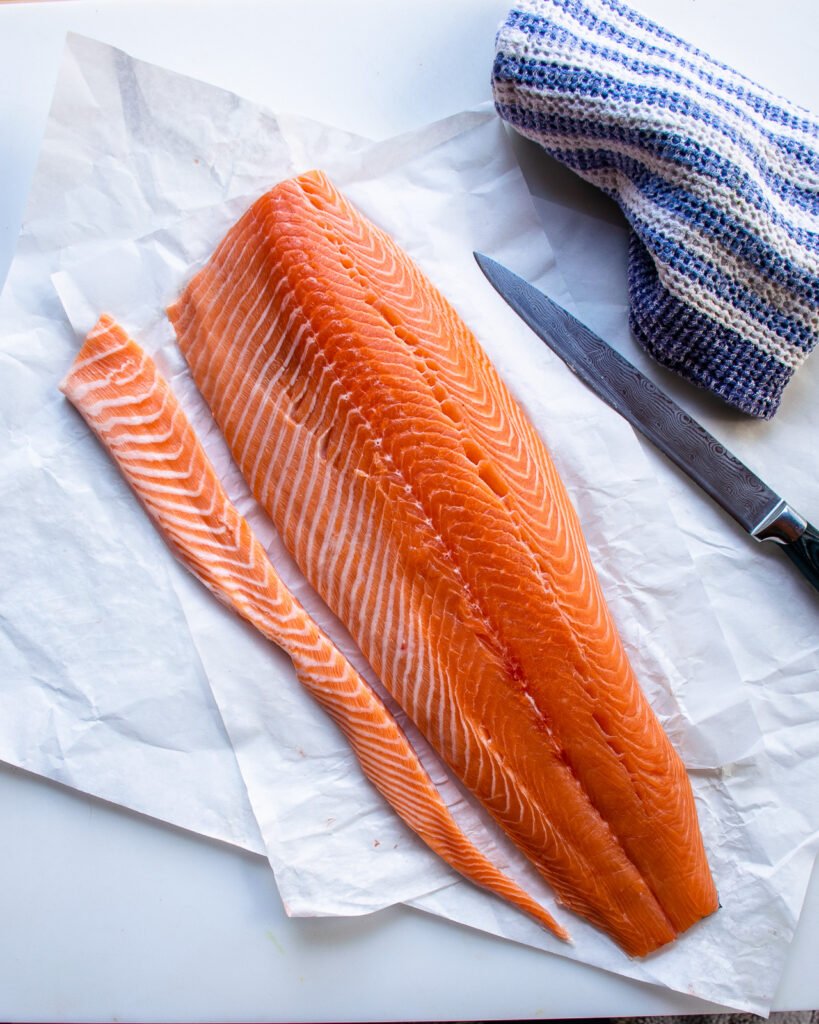
Trim Away the Belly Fat
The first step, after grabbing a very sharp and long knife is to trim away the belly fat on the salmon. This is the thinnest side of the fish that tends to be lighter in color and fattier than the rest of the fish. Trim this away because it won’t cook at the same time as the rest of the fish and will have a very different texture. Do not, however, throw this part of the salmon away! It might not look as pretty as the rest of the fish, but it has excellent flavor. Leave the skin on and pan sear the belly fat until the skin is crispy and the salmon is cooked through. You can also bake the belly fat in the oven or deep fry it for a delicious crispy treat.
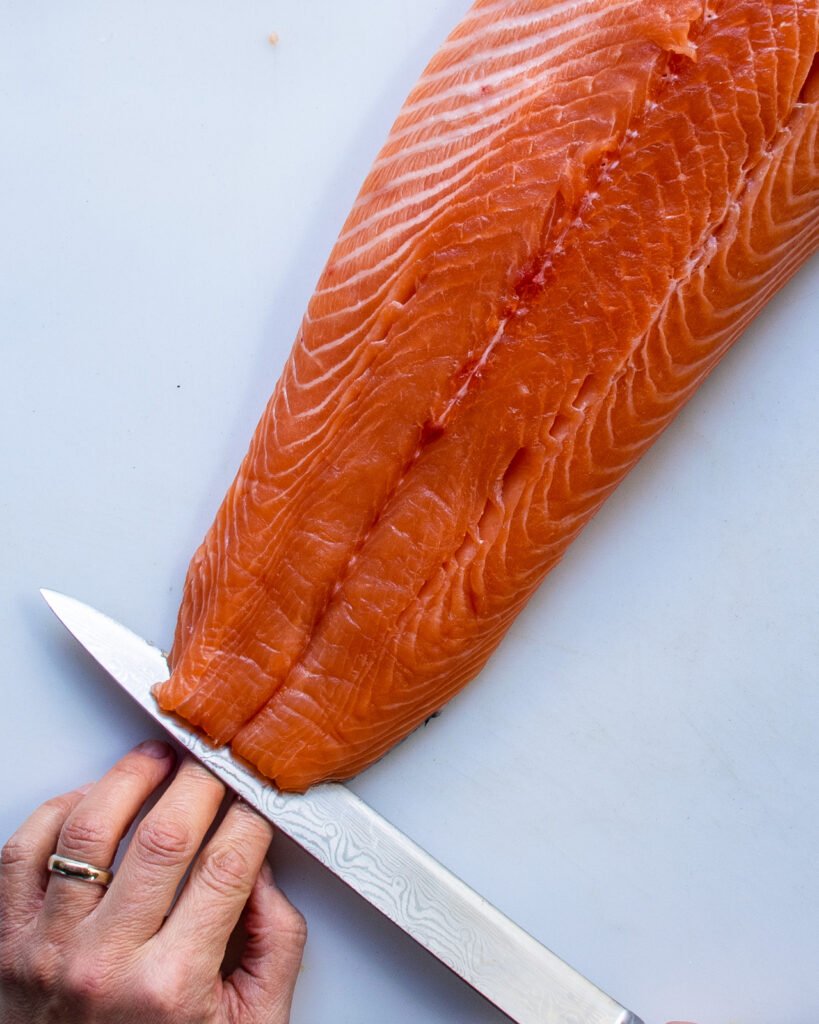
Removing the Salmon Skin
There are two ways you can choose to remove the skin from salmon. You can remove the skin from each fillet, one at a time; or you can remove all the skin from the whole side of salmon at once. For me, the determining factor is really the size of the knife I have at my disposal. If you have a good, sharp, long knife, taking all the skin off at once is usually more time-efficient. Otherwise, you can perform the same technique as the one I’m about to describe on each fillet, one at a time. The only difference is that with the whole side of salmon, we’re going to start at the tail end and work towards the heat. With individual fillets, you start from the belly side of the fillet and work towards the other side.

Get a Grip!
This is a slippery task! It’s made much easier if you have something to hold onto while you’re slicing away the skin. Start at the tail end of the salmon and slice the flesh away from the skin a little – just enough to expose a few inches. Then, make a hole in the salmon skin that you can stick your finger through. This is what you will hold onto while you skin the rest of the fish.
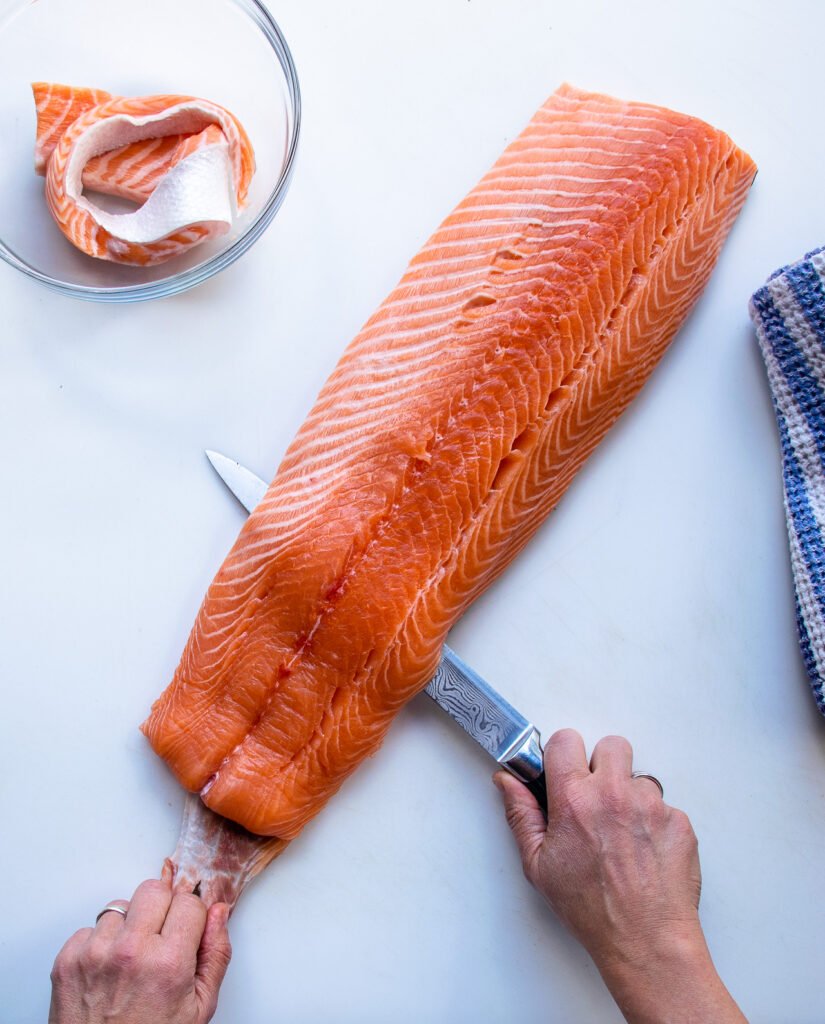
Stay low
Once you have a good grip with your finger through the skin, move the knife away from your grip hand and slice gently while keeping the blade parallel and as close as possible to the cutting board. Stop to check to make sure you’re not taking too much of the flesh with the skin and then keep on going until all the skin has been removed from the salmon. Keep the knife pointing down toward the cutting board slightly. It’s often helpful to do this right at the edge of your cutting board so that your knife can be below counter level as you slice. This helps keep the knife perfectly parallel to the cutting board.
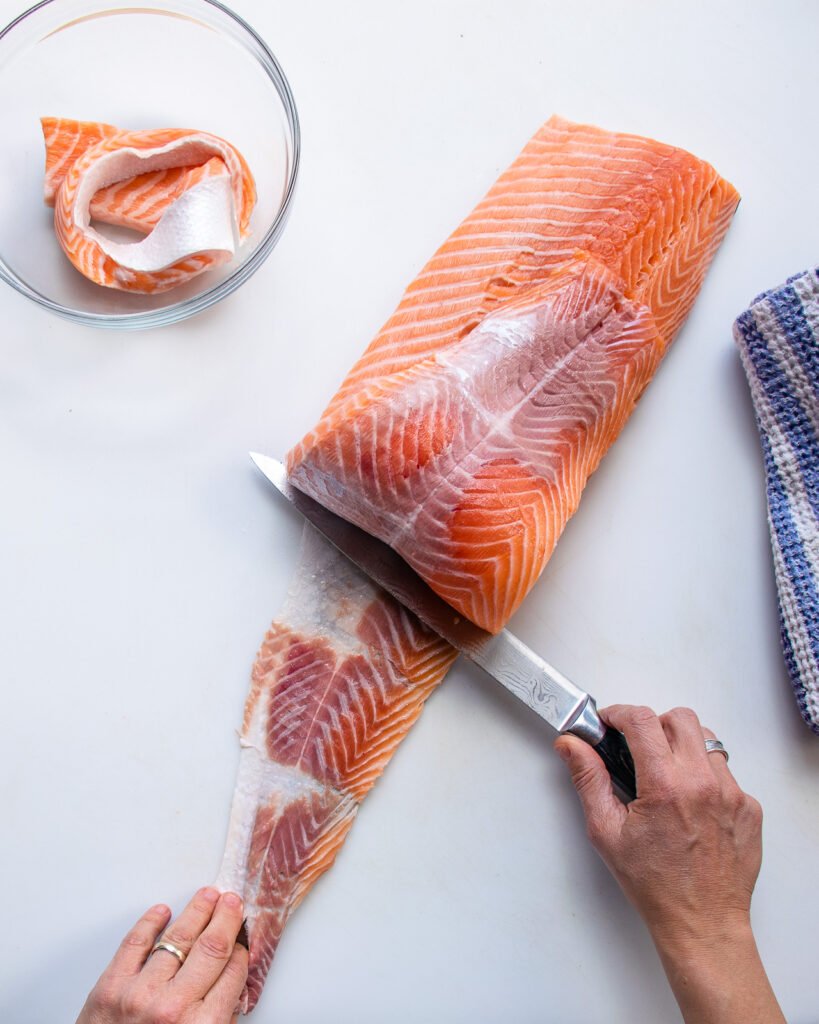
You might find some darker flesh underneath the salmon skin. This is a layer of insulating fat on the fish. While it’s not pretty, it is actually full of omega3’s and very good for us. You can choose to remove it if you like, but you’ll be missing out on some extra nutrition. Why not leave it on – after all, it’s on the underside of the fillet, so chances are no-one will see it.
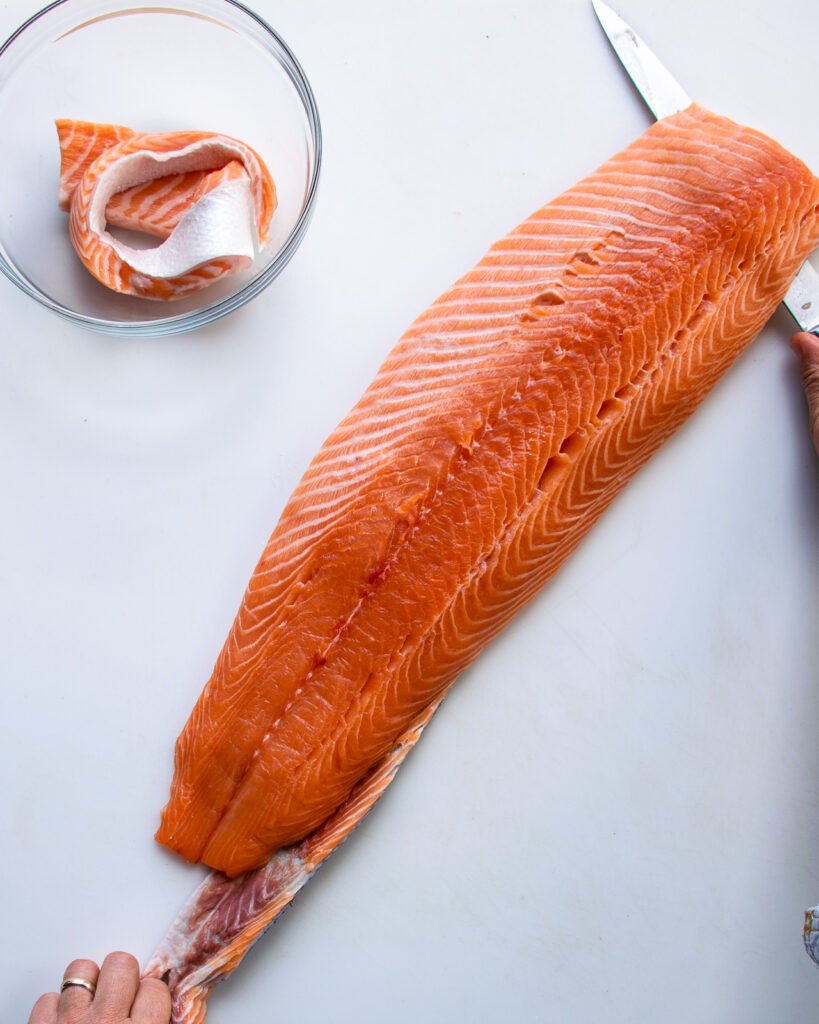

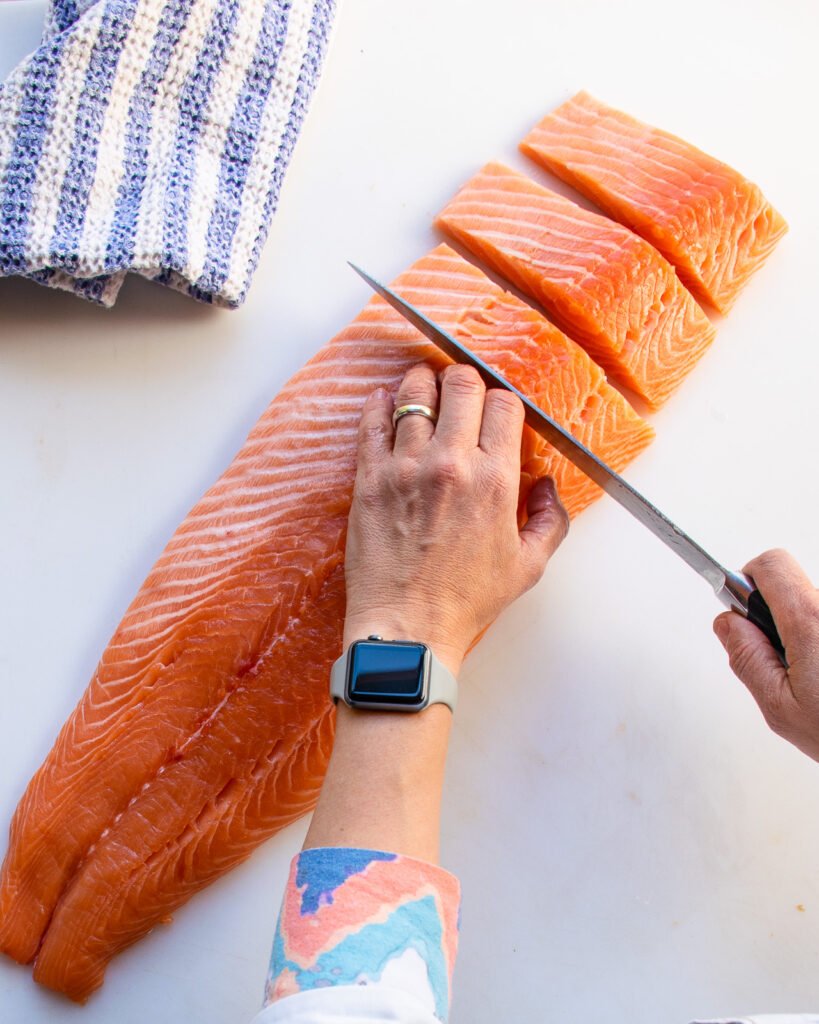
Cut the Salmon into Fillets
This is where you can decide what size and shape you’d like your salmon fillets to be. If you want them skinny and straight, slice straight across the fillet, remembering that a normal portion size of fish is about 5- to 6-ounces.

If you prefer an easier to manage shape in the kitchen, slice the salmon into wider portions and then cut them in half to form squares. The remaining tail piece is excellent to use for recipes where the shape and size of the fillet doesn’t matter – in a fish stew or for salmon salad, for example.
Options for Using a Whole Side of Salmon
Now, having taught you how to break down a whole side of salmon, it is completely possible to roast the whole side of salmon without breaking it down. This recipe for Baked Salmon with a Horseradish Crust has been one of my most popular recipes from my first cookbook, Comfortable in the Kitchen. You can leave the fish whole, with the skin on and then just cut it into portions as you serve it…. but you won’t have this exciting new skill to brag about!
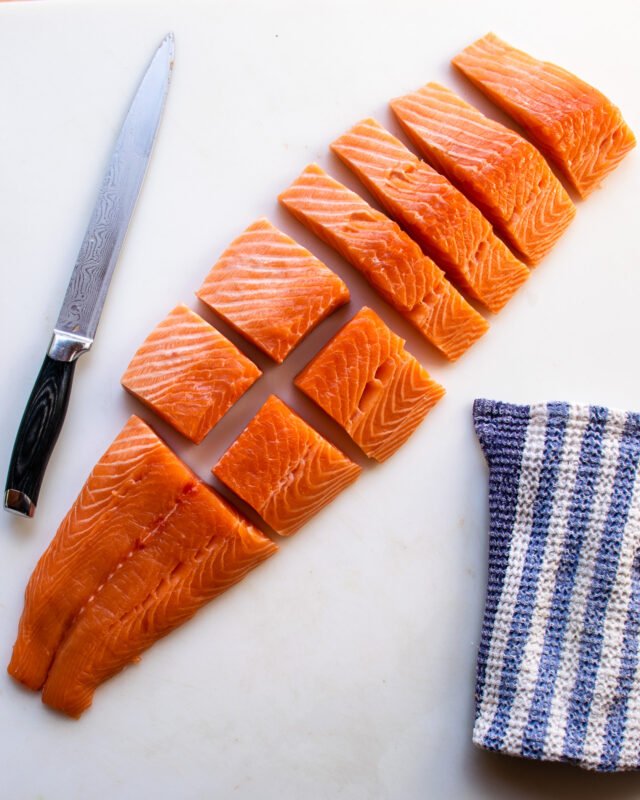

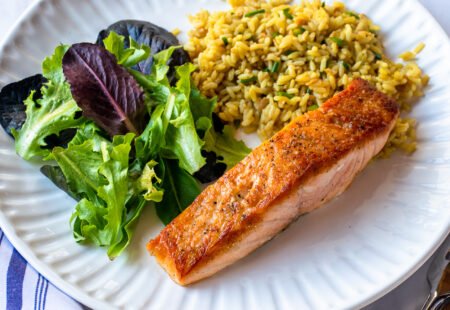
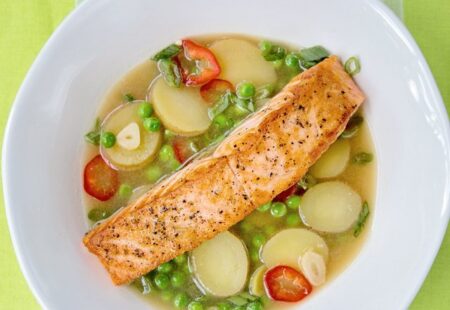
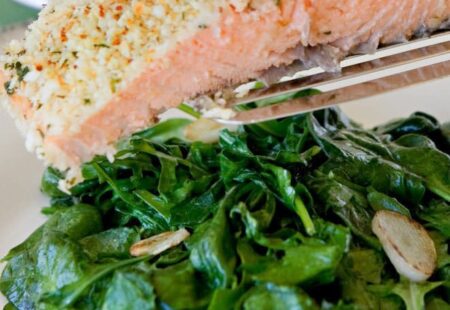
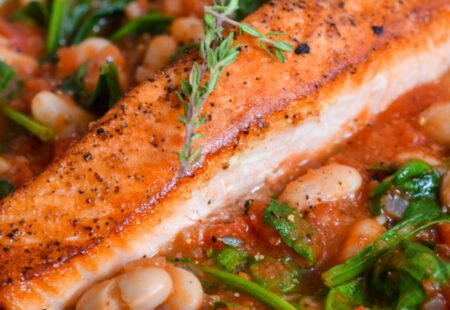
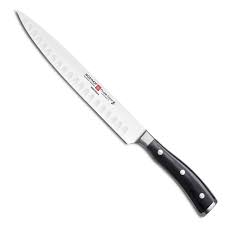
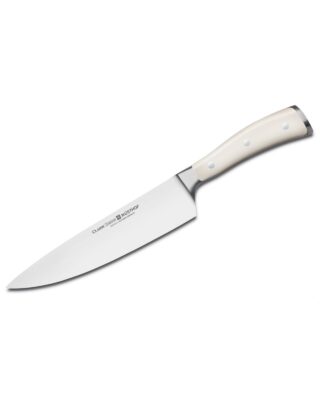
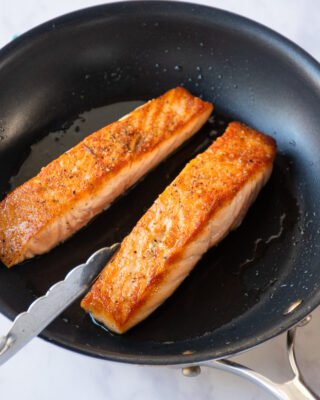

I really enjoy your demonstrations and appreciate the salmon-cutting lesson! However, I need to be better educated on types of salmon and how to shop for the freshest.
Thank you!
Hello. How much time does it take to cut a fillet of salmon into portions? I wondering if it’s worth the labor cost.
It really only takes about 5 to 10 minutes to cut down a side of salmon, so to me it is definitely worth it.